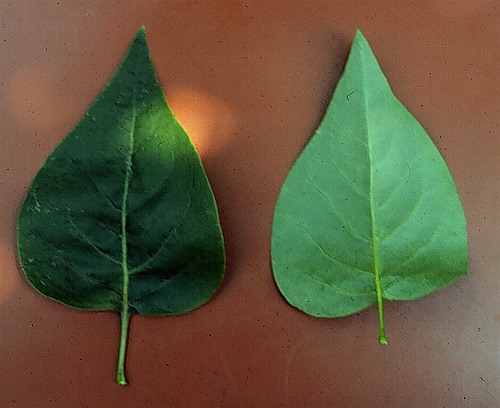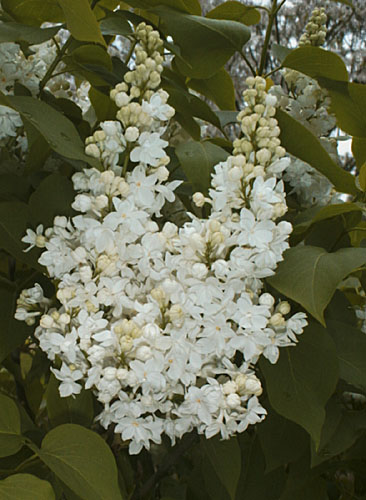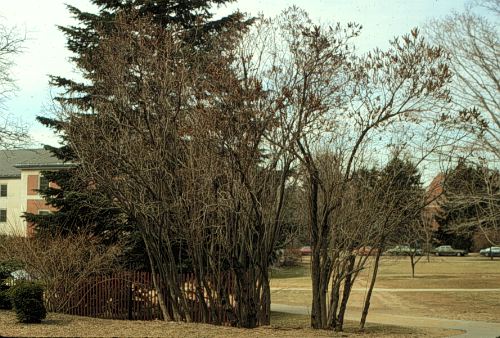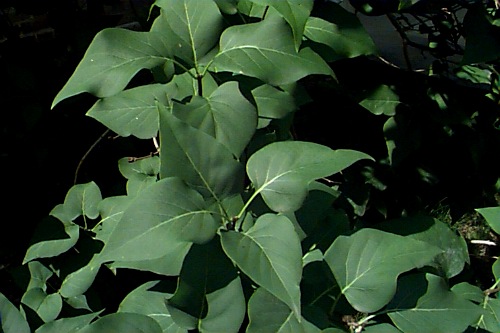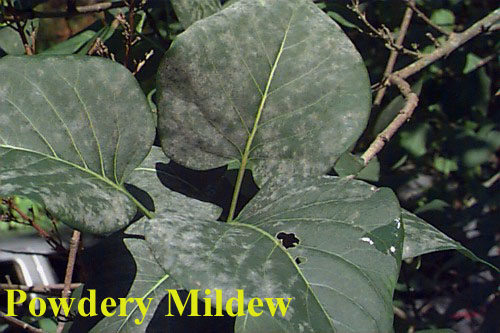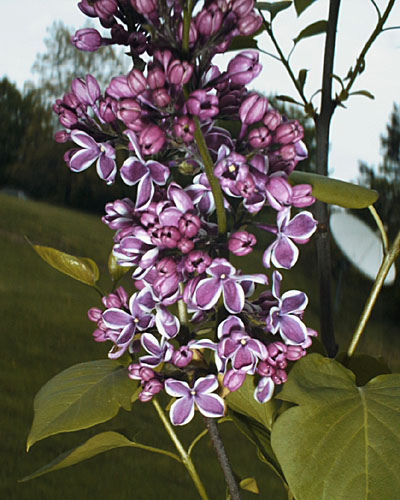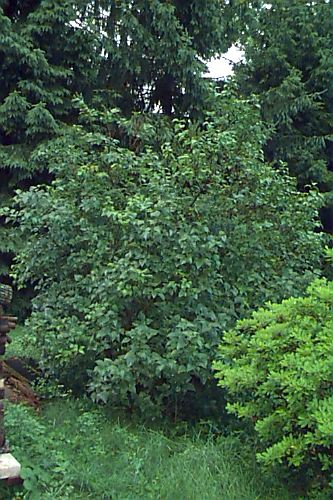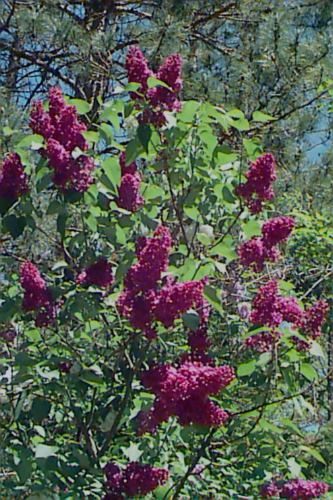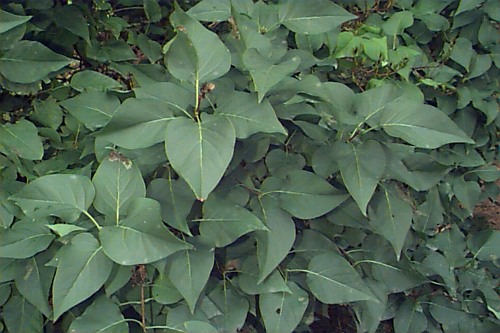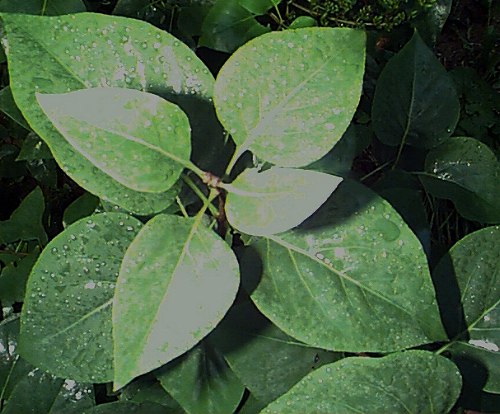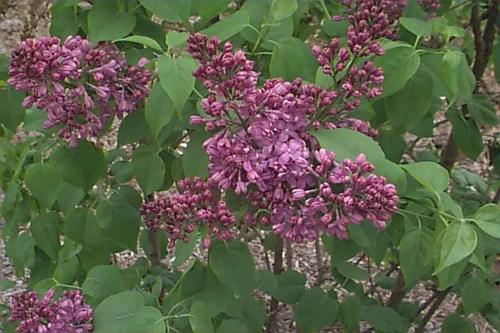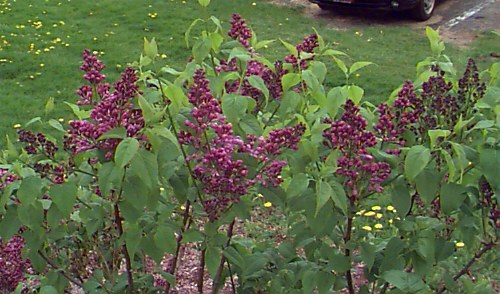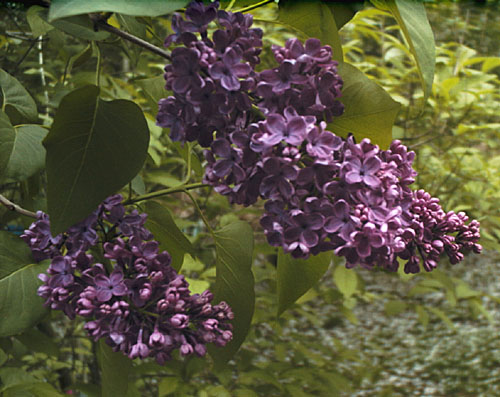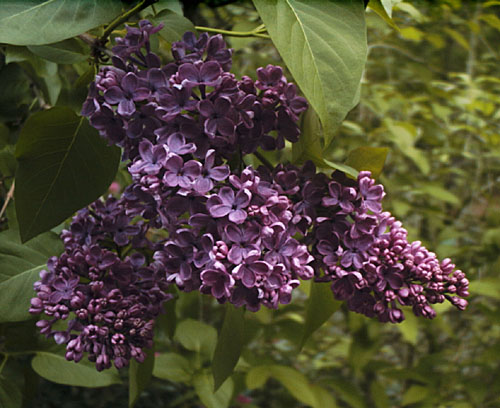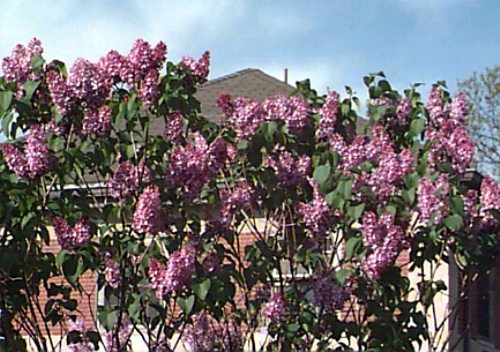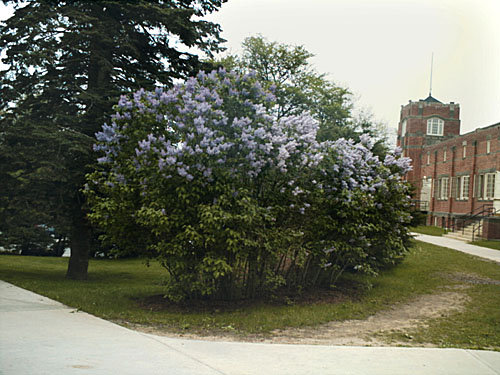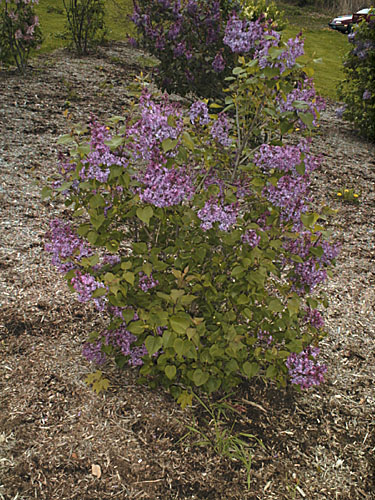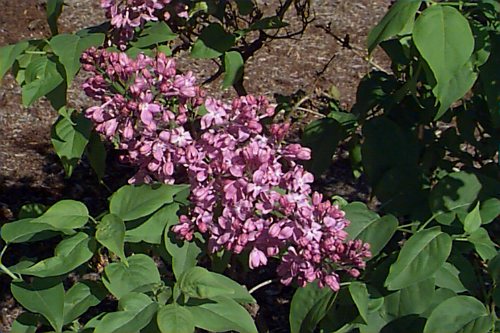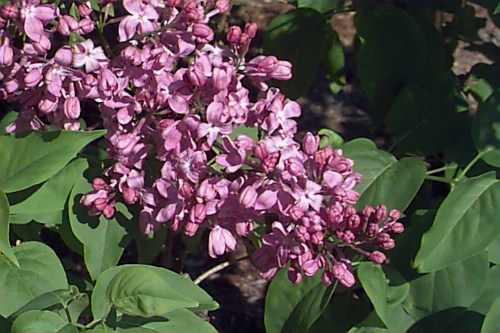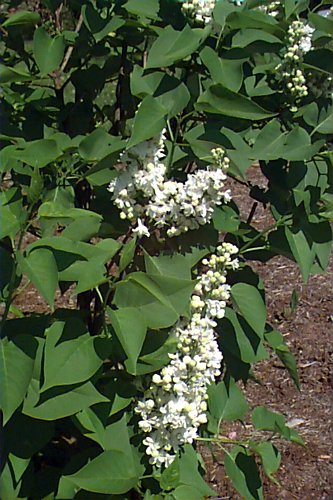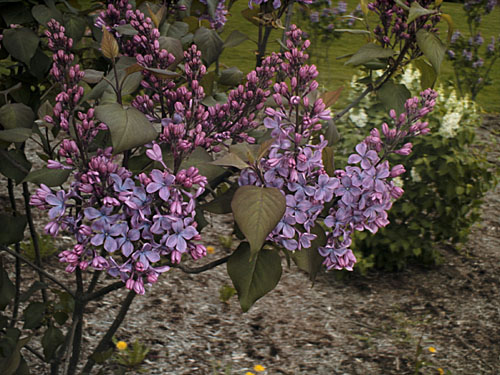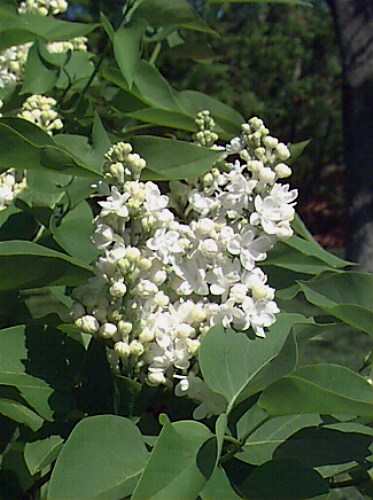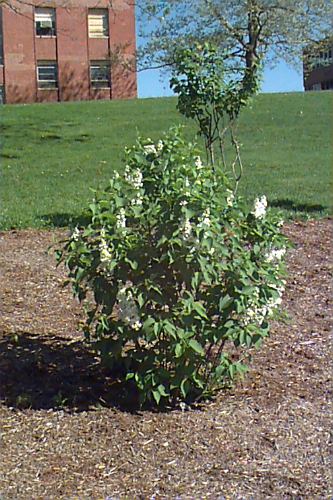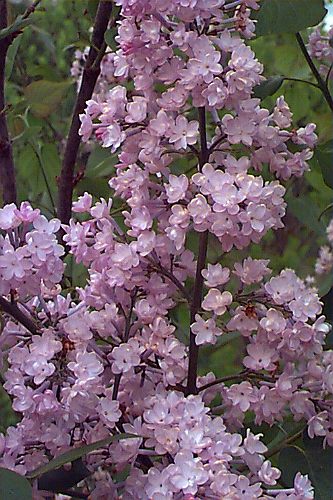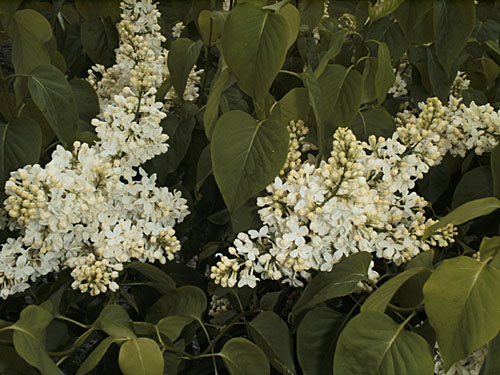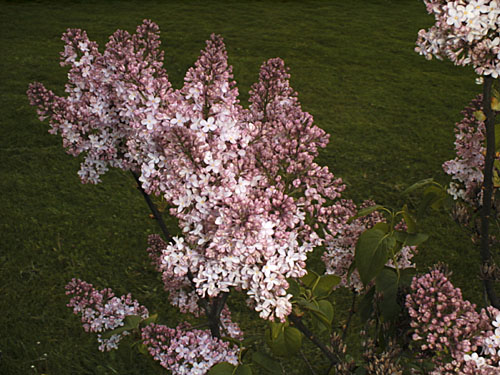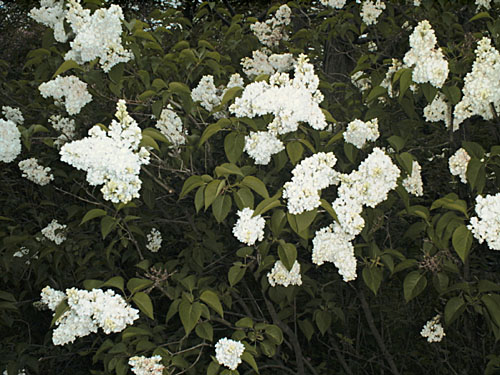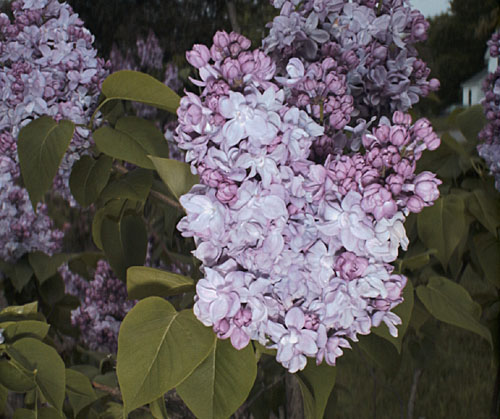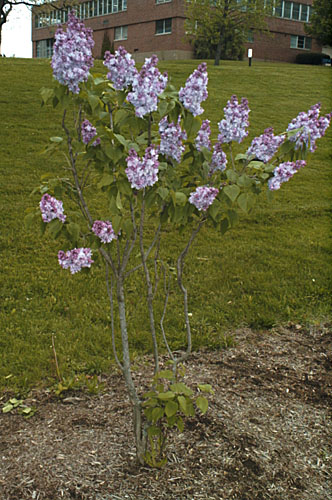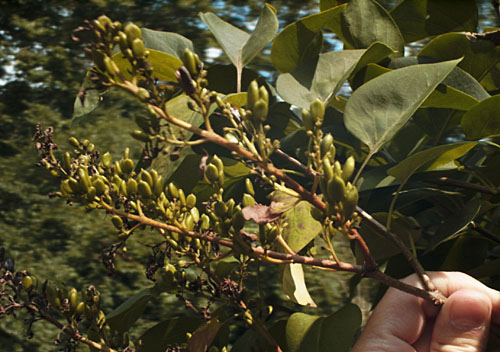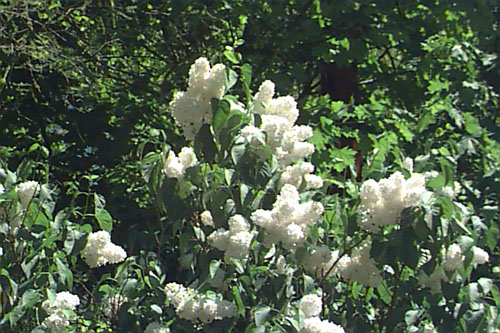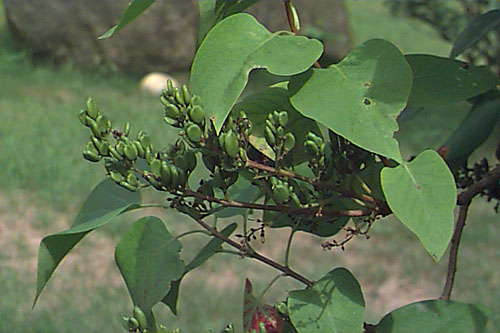Syringa vulgaris
Common Lilac
Oleaceae
ExpandHabitat
- native to southern Europe
- hardy to zone 3
Habit and Form
- an upright deciduous shrub
- 8' to 15' tall
- 6' to 12' wide
- lower parts of the branches do not have leaves
- medium growth rate
- medium texture
Summer Foliage
- opposite arranged leaves
- simple, ovate leaves
- 2" to 5" long
- subcordate leaf base
- entire leaf margin
- dark green leaf color
Autumn Foliage
- poor fall color
Flowers
- lilac flowers
- fragrant
- blooms in May
- flowers are borne in large terminal panicles
- panicles are 4" to 8" long
- showy
Fruit
- capsules borne in large panicles
- capsules located at the terminal tips of branches
- capsules are beaked
- should be removed
Bark
- light-gray bark
- smooth
- stems are stout
- small, raised lenticels
- raised leaf scars
Culture
- full sun
- transplants easily
- prefers well-drained, slightly acidic soil
- prune after flowering
- cut off old flower heads
Landscape Use
- specimen
- for fragrance
- small groupings
- for flowering effect
- for high quality foliage and form
Liabilities
- aphids, powdery mildew, scales
- caterpillars
ID Features
- beaked, dehiscent capsules
- large lilac, fragrant flowers
- opposite leaf arrangement
- leaves are dark green with a cordate leaf shape
- greenish brown buds with few scales
- stout stems
- thick bark with lenticels
Propagation
- by cuttings
- by seed
Cultivars/Varieties
Perhaps hundreds of forms are known, but those listed are common, superior and representative of the diversity available.
Blue Forms
'Nadezhda' (also known as 'Hope') - A fine double-flowered form, the purple buds reveal the bluish florets for a bicolor effect. The plant performs well in the landscape and expresses disease resistance, growing 8' tall and 6' wide (larger in time). The blooms are fragrant, long-lasting and hold up well under inclement weather. They are not produced profusely every year.
'Pres. Grevy' (also listed as 'President Grevy') - This upright plant (12' tall and 8' wide) offers double lilac-blue flowers arranged in large panicles.
'President Lincoln' - A classic variety, this plant is widely acknowledged as producing flowers that are closest to true blue. The forets are single and organized into loose conical clusters. The plant grows vigorously to form an upright-rounded plant 8' tall and 10' wide.
Magenta Forms
'Charles Joly' - An old fashioned classic, this plant produces numerous, smaller panicles of deep magenta flowers that open from purple buds. The plants reach 12' tall and 10' wide in time.
Pink Forms
'Belle de Nancy' - An old variety, this plant offers double pink blooms that are abundantly produced.
'Katherine Havemeyer' - One of the few good pink-flowering forms, this classic variety still merits a place in modern gardens. The florets are double and colored pink-lavender. They are borne in abundant panicles and over a long period. The plant reaches 12' tall and 10' wide, plus the foliage is high quality and resists mildew.
'Charm' - This plant grows more slowly into a smaller plant to 8'-10' tall and wide. It bears pink florets that are single and very large. The plant also performs well as a young transplant.
Purple/Lilac/Violet Forms
'Adelaide Dunbar' - This old hybrid, from early in the 20th century, features double purple blooms. The color is strong and the plant is desirable due to its healthy foliage that expresses mildew resistance.
'Andanken an Ludwig Spaeth' (also listed as 'Ludwig Spaeth') - A very old form, this popular form is still considered one of the better purple cultivars. The flowers are single, reddish-purple and borne slightly later than other forms -- thus extending the season. The plant is upright, to 12' tall and half as wide.
'Lavender Lady' - This plant flowers profusely with panicles of lavender florets that are fragrant. It is one of the best choices for warmer areas, as well, as it blooms reliably with little winter chill.
'Leon Gambetta' - Not as common as other types, this plant is nonetheless desirable for its double deep lilac flowers that emerge from pinkish buds. The plant grows upright to 12' tall with a narrower spread, and the foliage shows good resistance to mildew.
'Monge' - This selection bears purple-red flowers on long stems. The florets are single and the plant grows to 12' tall and wide.
White Forms
'Edith Cavell' - This upright cultivar grows taller than wide and offers large clusters of double, white flowers. It is a strong grower to 12' tall and 8' wide that is very showy in full bloom.
'Krasavitska Moskvy' (also known as 'Beauty of Moscow') - A very unusual form, this upright grower (12' tall and 8' wide) has pale pink buds that open to double, pink-white florets that usually age to white. The multi-colored effect brings great interest to lilac plantings.
'Miss Ellen Willmott' - One of the best whites, this plant offers ample production of double white flowers every year. The rounded plant grows 10' tall and wide.
'Mme. Lemoine' - This is a vigorous plant that grows wider than tall, to 10' tall and 12' wide. The double white flowers are very showy.
Novelty Forms
'Dappled Dawn' (also known as 'Acubifolia Variegata') - This variegated form has caught on and become popular. The leaves are splashed with yellow and are the setting for blue-purple flowers. The variegation holds well all season, and the plant is offered by nurseries and catalogs.
'Primrose' - Much publicized for its "yellow" flowers, this selection often fails to impress when grown in the United States. The flower color is usually more cream or creamy-yellow. In some cases, it only appears unique when grown amidst white-flowered plants for contrast. It is possible that cool temperatures, such as those of England, enhance the yellow coloring. No doubt the photos in many glossy catalogs are doctored to enhance the yellow shading. The plant becomes rounded and reaches 12' tall and wide in time.
'Sensation' - This popular novelty form bears purple florets that are edged white, for a bicolor "picotee" effect. The intricacy of the color is only showy upon close examination. The plant grows upright to 10' tall and slightly wider.
